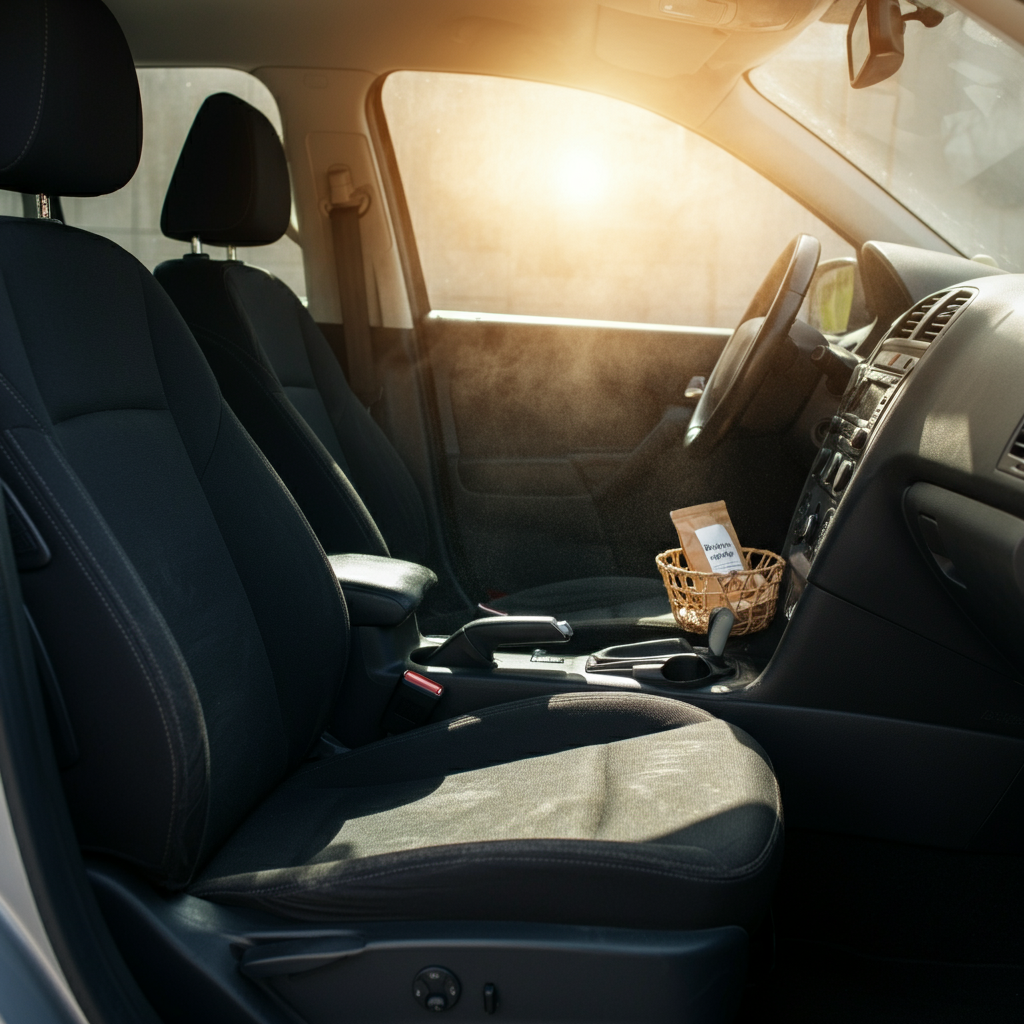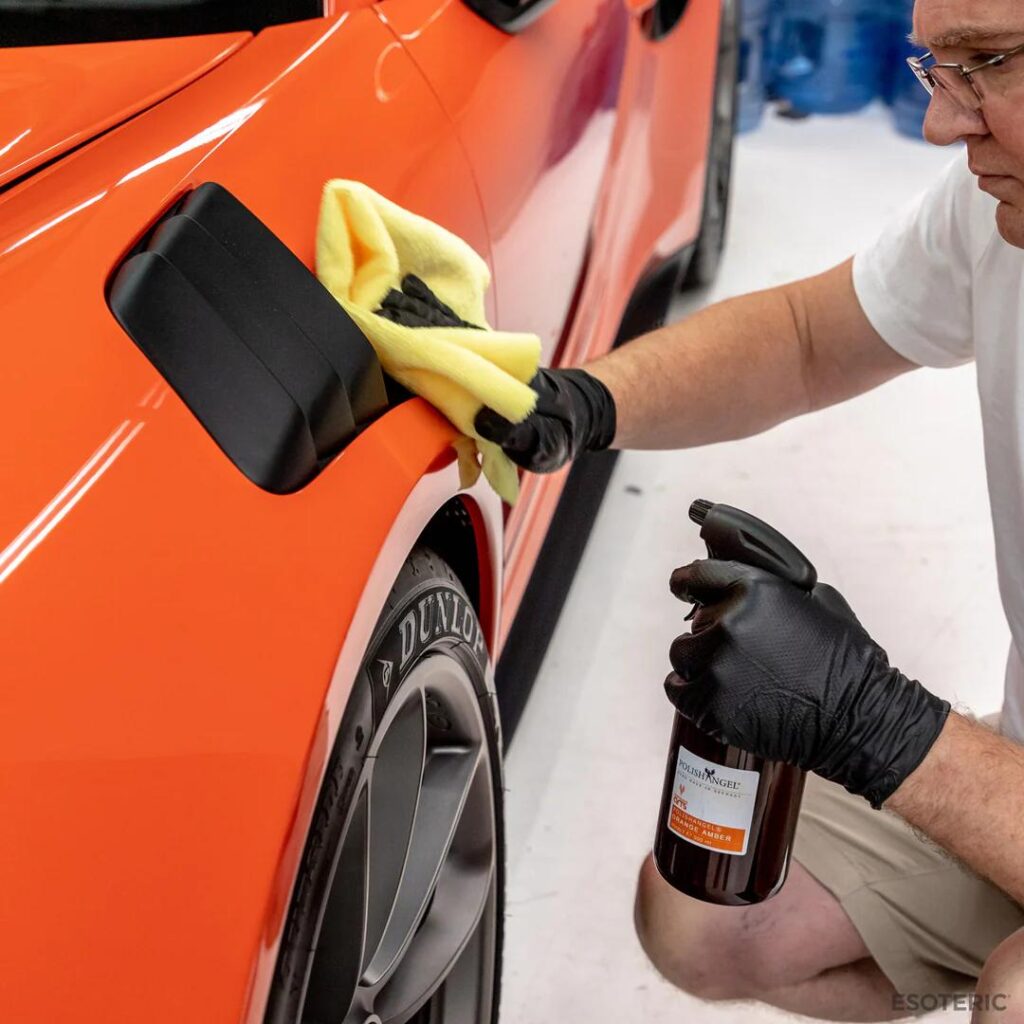As an Amazon Associate, I earn from qualifying purchases
Few things are more persistent than the lingering smell of smoke in a car. Whether you’ve purchased a used vehicle from a smoker, had passengers who smoked, or dealt with smoke from external sources like wildfires, that acrid odor seems to cling to every surface. The smell doesn’t just create an unpleasant driving experience—it embeds itself deep into upholstery, carpets, and even the ventilation system.
Removing smoke smell from your car requires more than just masking it with air fresheners. The odor-causing particles penetrate porous materials and continue to release their unpleasant scent long after the source is gone. Fortunately, with the right approach and techniques, you can eliminate smoke smell completely and restore your car’s fresh interior.
This comprehensive guide will walk you through proven methods to remove smoke smell from your car, from simple DIY solutions to professional treatments. You’ll learn why quick action matters, discover the most effective products and techniques, and understand how to prevent future odor problems.
Table of Contents
Why Removing Smoke Smell is Important
Beyond the obvious discomfort of driving in a smelly car, smoke odor poses several serious concerns that make removal essential.
Health Risks and Indoor Air Quality

Smoke residue contains harmful chemicals that continue to off-gas long after smoking has stopped. These particles can trigger allergies, worsen asthma symptoms, and cause respiratory irritation. Children and individuals with breathing conditions are particularly sensitive to these lingering toxins.
The confined space of a car’s interior concentrates these harmful substances, creating a more potent exposure risk than in larger, well-ventilated areas. Even third-hand smoke—the residue that remains on surfaces—can affect your health during every drive.
Impact on Vehicle Value and Comfort
Smoke smell significantly reduces your car’s resale value. Potential buyers often walk away from vehicles with persistent odors, viewing them as damaged goods. Even if you find a buyer, expect to accept a lower price to compensate for the odor issue.
The smell also affects your daily comfort and that of your passengers. It can cause headaches, nausea, and general discomfort during drives. Professional drivers, rideshare operators, and anyone who spends significant time in their vehicle will find smoke odor particularly problematic.
How to Remove Smoke Smell from Car (Step-by-Step)
Successfully eliminating smoke smell requires a systematic approach that addresses both surface odors and deeply embedded particles. Follow these steps in order for the best results.
Step 1: Clean the Interior Thoroughly
Start with a comprehensive interior cleaning to remove visible residue and surface-level odors.
Begin by removing all personal items, floor mats, and seat covers. Vacuum every surface thoroughly, including seats, carpets, floor areas, and crevices where ash and debris might hide. Use crevice tools to reach between seats and in cup holders where particles often accumulate.
Wipe down all hard surfaces with a damp microfiber cloth and an appropriate cleaner. Pay special attention to the dashboard, door panels, center console, and steering wheel. Smoke particles settle on these surfaces and continue releasing odor. Use a mild all-purpose cleaner or a solution of warm water and dish soap for most surfaces.
Don’t forget often-overlooked areas like seat belts, which absorb odors readily. Clean these with a cloth dampened in your cleaning solution, then allow them to air dry completely.
Step 2: Air Out the Car
Proper ventilation helps remove airborne particles and begins the deodorizing process.
Park your car in a safe, well-ventilated area and open all windows and doors. If possible, remove the seats temporarily to improve air circulation. Allow the car to air out for several hours or overnight.
Turn on the ventilation system and run it through all settings—fresh air, recirculate, heat, and air conditioning. This helps move stagnant air through the system and begins clearing the ventilation ducts where smoke particles may have settled.
Step 3: Use Odor Absorbers
Natural and commercial odor absorbers work by trapping and neutralizing smell-causing particles rather than simply masking them.
Baking soda is one of the most effective natural odor absorbers. Sprinkle it generously over carpets, seats, and floor mats. Let it sit overnight, then vacuum thoroughly. For fabric seats, work the baking soda into the material gently before letting it sit.
Activated charcoal offers another powerful natural solution. Place several bowls of activated charcoal throughout the car’s interior and leave them overnight. The charcoal will absorb odor molecules from the air.
Commercial odor eliminators designed specifically for automotive use often provide faster results. Look for enzymatic cleaners that break down odor-causing compounds rather than simply covering them up.
Step 4: Deep Clean the Upholstery
Fabric seats and carpets hold the most stubborn smoke odors and require intensive cleaning.
For DIY deep cleaning, use an upholstery cleaner specifically designed for automotive interiors. Test any cleaner on an inconspicuous area first to ensure it won’t damage or discolor the material. Work in small sections, applying the cleaner according to manufacturer instructions and extracting it thoroughly.
Steam cleaning provides excellent results for fabric upholstery. The high temperature helps break down odor-causing compounds while the extraction process removes them from deep within the material. Rent or purchase a portable steam cleaner designed for automotive use.
Professional cleaning services have specialized equipment and cleaning solutions that can achieve results beyond DIY methods. If the smoke smell is severe or your initial attempts haven’t been successful, professional cleaning may be worth the investment.
Step 5: Consider Ozone Treatment
Ozone treatment represents the most aggressive approach to smoke odor elimination and can be highly effective for stubborn smells.
Ozone generators produce O3, which breaks down odor-causing molecules at the molecular level. This process neutralizes smells rather than masking them, making it particularly effective for smoke odors that have penetrated deeply into materials.
Professional ozone treatment typically provides better results than portable units. The process involves sealing the car and running the ozone generator for several hours while the vehicle is unoccupied. Never occupy a vehicle during ozone treatment, as ozone can be harmful to humans and pets.
After ozone treatment, allow the car to air out completely before occupying it. The ozone smell itself will dissipate, leaving behind a neutral-smelling interior.
Best Products for Removing Smoke Smell
Choosing the right products can make the difference between temporary masking and permanent odor elimination.
Air Purifiers and Odor Eliminators
Automotive air purifiers help maintain clean air after you’ve completed the initial cleaning process. Look for units with HEPA filters and activated carbon, which trap particles and absorb odors effectively.
Enzyme-based odor eliminators work by breaking down the molecular structure of smell-causing compounds. These products are particularly effective on organic odors like smoke and often provide longer-lasting results than traditional air fresheners.
Avoid products that simply mask odors with strong fragrances. These create a temporary solution but allow the underlying smoke smell to return once the fragrance fades.
Specialized Automotive Cleaners
Upholstery cleaners designed specifically for automotive use consider the unique materials and construction of car interiors. These products often work better than household cleaners and are less likely to cause damage.
Interior detailing sprays can help maintain cleanliness between deep cleaning sessions. Choose products that offer odor elimination properties rather than just surface cleaning.
Fabric protectors applied after cleaning can help prevent future odors from penetrating deeply into upholstery and carpets.
Choosing Products Based on Severity
Light smoke odors may respond well to natural solutions like baking soda and white vinegar. These gentle approaches work well for occasional exposure or recent contamination.
Moderate odors typically require commercial odor eliminators and thorough cleaning with specialized automotive products. This level often needs multiple treatment cycles to achieve complete elimination.
Severe smoke odors, particularly from long-term smoking in the vehicle, usually require professional-grade products or services. Consider ozone treatment or professional detailing for these situations.
How to Prevent Smoke Smell from Lingering in the Future
Prevention is always easier and more cost-effective than removal. Implementing these strategies will help keep your car smelling fresh.
Regular Maintenance and Air Quality
Install and maintain a quality cabin air filter to trap particles before they enter your car’s interior. Replace the filter according to manufacturer recommendations or more frequently if you’re exposed to smoke regularly.
Use portable air purifiers during drives if you’re frequently exposed to external smoke sources like traffic or wildfires. These devices help maintain air quality in real-time.
Keep windows cracked slightly during highway driving to maintain air circulation, but be mindful of external air quality conditions.
Protective Measures
If you must allow smoking in your vehicle, use seat covers and floor mats that can be easily removed and cleaned. This creates a barrier between smoke particles and your car’s permanent surfaces.
Address spills and contamination immediately. The longer smoke particles remain in contact with surfaces, the deeper they penetrate and the harder they become to remove.
Consider professional fabric protection treatments that create a barrier against odor absorption. These treatments make future cleaning more effective and help prevent permanent staining.
Restoring Your Car’s Fresh Interior
Eliminating smoke smell from your car improves both your driving experience and your vehicle’s value. The process requires patience and the right approach, but the results are worth the effort. Start with thorough cleaning and natural odor absorbers for light smells, progressing to professional treatments for more stubborn odors.
Remember that complete odor elimination may take several treatment cycles, especially for severe contamination. Don’t get discouraged if the first attempt doesn’t completely solve the problem. Persistence and the right combination of techniques will ultimately restore your car’s fresh, clean interior.
Take action sooner rather than later—smoke odors become more difficult to remove as they settle deeper into materials over time. With the methods outlined in this guide, you can successfully eliminate smoke smell and enjoy clean, fresh air during every drive.
Frequently Asked Questions About how to remove smoke smell from car
How long does it take to completely remove smoke smell from a car?
The time required depends on the severity of the odor and the methods used. Light smoke smells might be eliminated in a day or two with thorough cleaning and odor absorbers. Severe contamination from long-term smoking can take several weeks of repeated treatments. Ozone treatment often provides faster results, potentially eliminating odors within 24-48 hours.
Can I use air fresheners to get rid of smoke smell?
Air fresheners only mask smoke odors temporarily and don’t eliminate the underlying cause. In fact, mixing artificial fragrances with smoke smell often creates an even more unpleasant combination. Focus on odor elimination techniques before using any air fresheners to maintain the results.
Will ozone treatment harm my car’s interior?
When used properly, ozone treatment is safe for most car interior materials. However, it can cause rubber and certain plastics to deteriorate over time with repeated exposure. Professional ozone treatment services know how to protect sensitive components and use appropriate exposure times to minimize any potential damage.
Is there a way to prevent smoke smell in the first place?
The best prevention is avoiding smoking in the car entirely. If smoking must occur, crack windows for ventilation, use ashtrays to contain ash and butts, and clean surfaces regularly. Installing a quality cabin air filter and using seat covers can also help minimize odor absorption.
Can professional cleaning services remove smoke smell permanently?
Professional services have access to industrial-grade equipment and specialized cleaning products that can achieve permanent odor elimination in most cases. They can perform deep steam cleaning, apply enzymatic treatments, and conduct ozone treatment safely. For severe contamination, professional services offer the best chance of complete odor removal.
“For more detailed tips on preventing and removing smoke smell from your car, check out this helpful guide from car and driver.”

As an Amazon Associate, I earn from qualifying purchases


